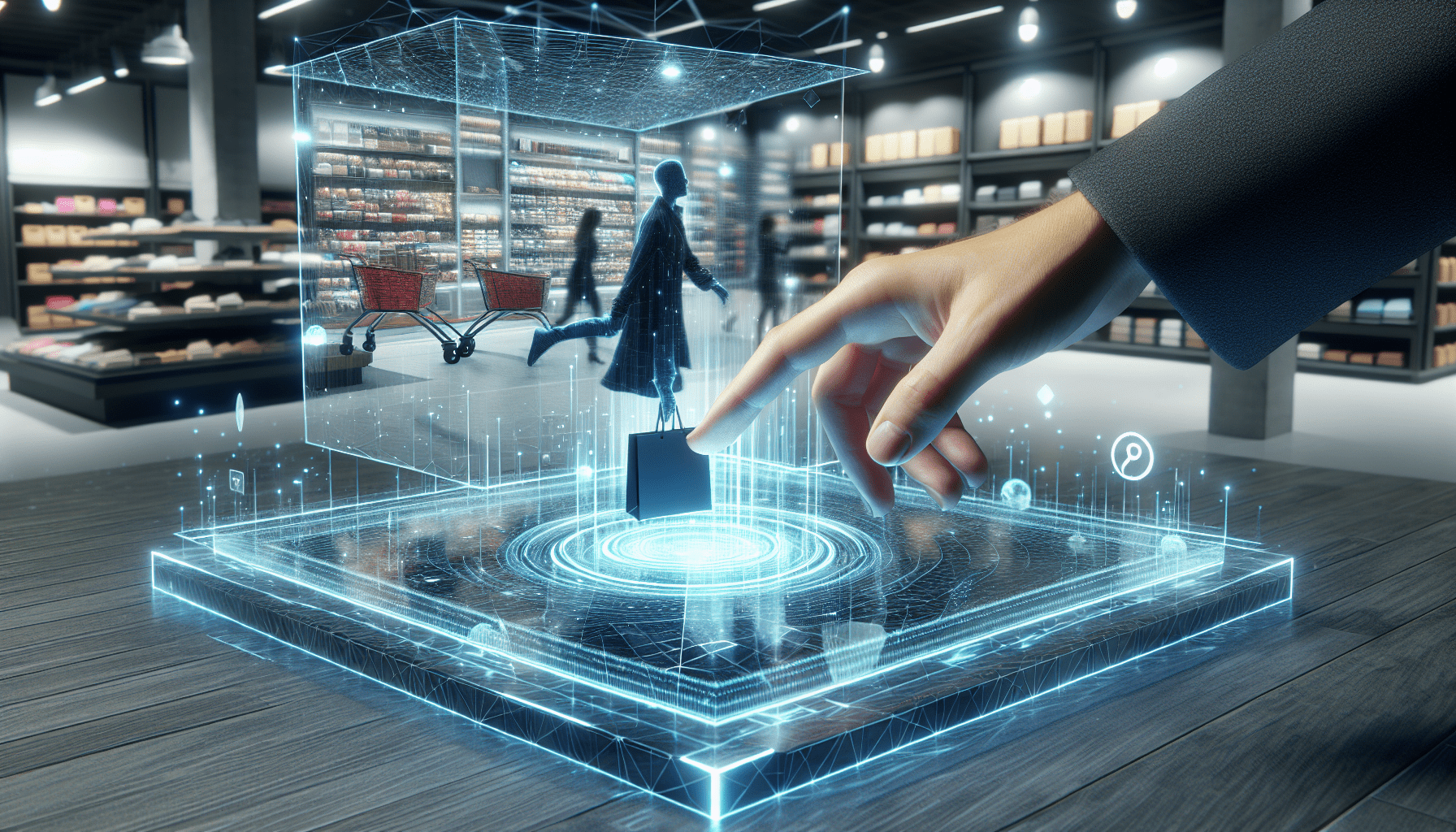Can Augmented Reality Improve Your E-commerce Business?
Have you ever considered how augmented reality (AR) could transform your e-commerce strategies? AR technology is rapidly evolving and has the potential to revolutionize the way customers shop online. In this article, we will explore how integrating AR into your e-commerce platform can benefit your business and enhance the overall shopping experience for your customers. Let’s dive into the exciting world of AR and how it can take your e-commerce business to the next level.
Understanding Augmented Reality in E-commerce
Imagine being able to try on clothes, test out furniture, or see how a product looks in your home before making a purchase, all through your smartphone or computer screen. This is the power of augmented reality in e-commerce. AR overlays digital information onto the physical world, creating an immersive shopping experience for customers. By superimposing virtual images onto the real environment, AR enables shoppers to interact with products in a realistic way, helping them make more informed purchase decisions.
Benefits of Augmented Reality for E-commerce
Augmented reality offers several advantages for e-commerce businesses looking to enhance their online shopping experience. Some of the key benefits of integrating AR into your e-commerce strategies include:
- Increased Engagement: AR technology captures the attention of customers and keeps them engaged with your products for longer periods. By offering interactive experiences, you can create a more memorable shopping journey that encourages repeat visits.
- Improved Customer Confidence: Allowing customers to visualize products in real-world settings through AR reduces the guesswork involved in online shopping. This visual confirmation can boost customer confidence, leading to higher conversion rates and reduced return rates.
- Personalized Shopping Experiences: AR technology enables personalized product recommendations and virtual try-on options, tailoring the shopping experience to individual preferences. By offering customized suggestions based on user behavior, you can enhance customer satisfaction and drive sales.
- Reduced Product Returns: With AR’s ability to provide accurate size and fit predictions, customers can make more informed decisions about their purchases, resulting in fewer returns due to sizing issues. This can save your business time and money while improving customer satisfaction.
- Competitive Advantage: By incorporating AR into your e-commerce platform, you can differentiate your brand from competitors and showcase your innovative approach to online shopping. This unique selling point can attract new customers and retain existing ones, helping you stay ahead in a competitive market.
Implementing Augmented Reality in Your E-commerce Business
Now that you understand the potential benefits of augmented reality for your e-commerce business, it’s time to consider how to integrate this technology into your existing platform. Implementing AR may seem daunting, but with the right approach and tools, you can create a seamless shopping experience that sets your business apart from the competition.
Choosing the Right AR Tools and Platforms
When selecting AR tools and platforms for your e-commerce business, it’s essential to consider your specific needs and budget. There are various AR solutions available, ranging from simple plug-and-play apps to custom-built systems tailored to your brand. Here are some popular AR tools and platforms to explore:
| AR Tools | Description |
|---|---|
| Shopify AR | An easy-to-use AR tool designed for Shopify stores, allowing customers to visualize products in their environment through their smartphones. |
| Augment | A platform that enables retailers to create and display 3D models of their products in AR, enhancing the shopping experience for online shoppers. |
| 3DBin | A tool that converts 2D images into 3D models, enabling customers to view items from different angles and sizes using AR technology. |
| Blippar | An AR platform that offers interactive features like product information, animations, and gamification, enhancing user engagement and brand awareness. |
| ARitize | A comprehensive AR solution that provides advanced features such as virtual try-on, interactive demos, and in-store navigation, creating an immersive shopping experience for customers. |
Integrating AR into Your E-commerce Website
Once you have chosen the appropriate AR tools and platforms for your e-commerce business, the next step is to integrate AR features seamlessly into your website. Here are some tips for effectively implementing AR into your online store:
- Optimize Product Visualization: Ensure that your product images and 3D models are high-quality and optimized for AR viewing. Provide various angles and color options for customers to interact with, enhancing their shopping experience.
- Simplify User Navigation: Make the AR features easy to access and user-friendly for customers of all technical levels. Implement intuitive controls and instructions to guide users through the augmented reality experience seamlessly.
- Offer Interactive Experiences: Create interactive AR elements like virtual try-on, product comparisons, or customization options to engage customers and encourage exploration. The more interactive and personalized the experience, the better the chances of conversion.
- Provide Clear Calls to Action: Include clear calls to action (CTAs) that prompt users to try out the AR features, such as “Try it now” or “View in AR.” Encourage customers to engage with the AR technology to enhance their shopping experience and increase conversion rates.

Case Studies: E-commerce Brands Leveraging Augmented Reality
To better understand the impact of augmented reality on e-commerce businesses, let’s take a look at some real-life case studies of brands successfully integrating AR into their online platforms. These examples demonstrate how AR technology can drive sales, improve customer engagement, and enhance the overall shopping experience.
Case Study 1: IKEA Place
IKEA, the Swedish furniture retailer, launched the IKEA Place app, which allows customers to visualize furniture and home decor products in their space using augmented reality. By superimposing true-to-scale 3D models of IKEA products onto the real environment, customers can see how the items look and fit in their homes before making a purchase. The IKEA Place app has significantly increased user engagement, reduced product returns, and strengthened customer loyalty by providing a convenient and immersive shopping experience.
Case Study 2: Warby Parker
Warby Parker, an American eyewear retailer, introduced a virtual try-on feature on their website and mobile app, allowing customers to see how glasses look on their faces using AR technology. By using facial recognition and augmented reality, Warby Parker offers a personalized shopping experience that helps customers find the perfect pair of glasses without visiting a physical store. This interactive feature has led to higher conversion rates, decreased return rates, and improved customer satisfaction, positioning Warby Parker as a leader in AR-driven e-commerce experiences.
Case Study 3: Sephora Virtual Artist
Sephora, the beauty retailer, launched the Virtual Artist feature on their website and mobile app, enabling customers to virtually try on makeup products through AR technology. By uploading a selfie, customers can experiment with different makeup looks, shades, and products in real-time, enhancing the online shopping experience. Sephora’s Virtual Artist tool has boosted customer engagement, increased online sales, and garnered positive feedback from beauty enthusiasts who appreciate the convenience and accuracy of the virtual try-on experience.
Future Trends in AR E-commerce
As technology continues to advance, the future of augmented reality in e-commerce looks increasingly promising. With ongoing innovations in AR hardware, software, and capabilities, there are several emerging trends that e-commerce businesses should keep an eye on to stay ahead of the competition. Let’s explore some of the future trends shaping the landscape of AR e-commerce.
1. Social Commerce Integration
Social media platforms are increasingly integrating augmented reality features to enhance the shopping experience for users. From AR-powered ads to virtual try-on experiences, social commerce is leveraging AR technology to promote products, engage with customers, and drive sales directly within social apps. E-commerce brands can benefit from partnering with social platforms to reach a broader audience and create immersive shopping experiences that blend social interaction with online shopping.
2. AR Cloud Services
AR cloud services are revolutionizing the way AR experiences are created and shared across devices and platforms. By storing and processing spatial data in the cloud, AR cloud services enable seamless interactions between the physical and digital worlds, allowing users to access AR content and applications from anywhere. E-commerce businesses can leverage AR cloud services to deliver personalized and location-based AR experiences that enhance customer engagement and drive conversions.
3. Enhanced Product Visualization
With advancements in AR technology, e-commerce businesses can offer more realistic and detailed product visualizations to customers. By integrating features like AR-powered 3D modeling, virtual try-on, and interactive product demos, brands can provide shoppers with a lifelike shopping experience that replicates the in-store experience. Enhanced product visualization not only boosts customer confidence and satisfaction but also reduces the likelihood of product returns, resulting in a more efficient and profitable e-commerce operation.
4. AI-powered Personalization
Artificial intelligence (AI) is playing a crucial role in enhancing personalized shopping experiences through augmented reality. By leveraging AI algorithms to analyze user preferences, browsing behavior, and purchase history, e-commerce businesses can deliver targeted product recommendations, customized offers, and personalized AR experiences to individual customers. AI-powered personalization helps businesses build stronger relationships with customers, increase sales, and improve overall customer satisfaction by providing relevant and tailored shopping experiences.

Conclusion
Augmented reality has the potential to transform the e-commerce industry by offering immersive and interactive shopping experiences that engage customers, boost sales, and differentiate brands in a competitive market. By understanding the benefits of augmented reality, implementing AR into your e-commerce platform, learning from successful case studies, and embracing future trends, you can leverage AR technology to enhance your online shopping experience, delight customers, and drive business growth. Are you ready to take your e-commerce strategies to the next level with augmented reality? Start exploring the possibilities of AR integration in your online store and unlock new opportunities for success in the digital marketplace.
